Depending on the provider, migrating to a new access control solution might take a lot of time, effort, and internal and external resources. To ensure you make the right decision and select a provider that can adapt to your needs, ask potential solution providers the following:
- Is the system proprietary or do they have an open architecture?
- Does the provider have a comprehensive partner ecosystem?
- How is the mobile app rated?
- Will the solution support current workflows or improve upon them?
- Are current software or hardware features supported with the new system?
Here we’ll review some of the most common migration scenarios.
Scenario 1: Keep Your Existing Access Control Readers and Wiring
This option is most appealing to businesses interested in enhancing their access control solution with a web interface while minimizing overall migration cost, user impact, and deployment effort.
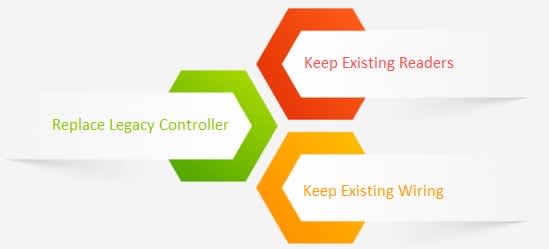
This scenario allows businesses that are risk-averse, budget conscious, or looking to migrate in phases the ability to explore a cloud-based access control system with minimal overall impact.
Efficiently execute this migration scenario by replacing your existing controller with Kisi Controller Pro 2 and Kisi Wiegand Board (see image below).
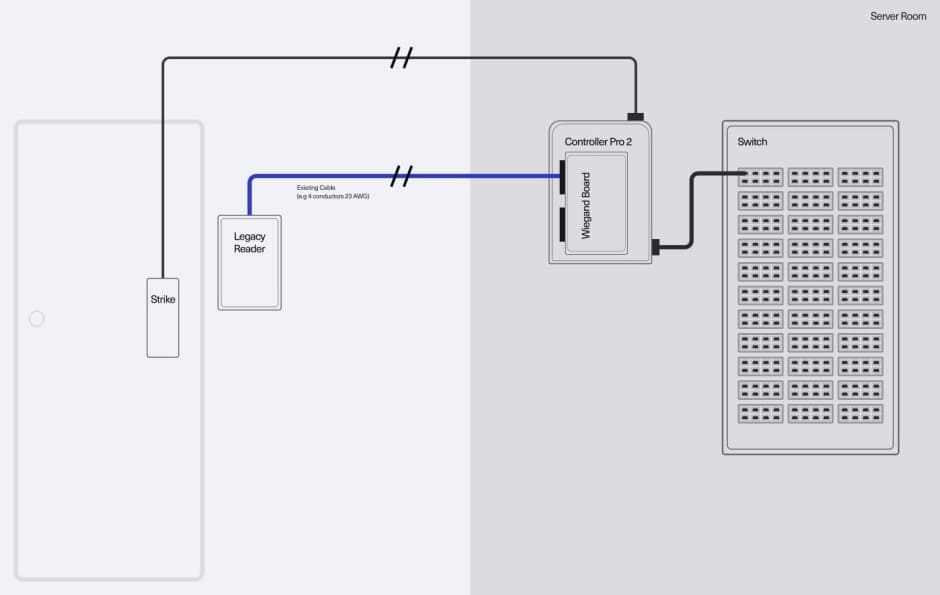
Scenario 2: Keep Your Existing Access Control Readers, Wiring, and Credentials
This option is most appealing to businesses interested in keeping disruptions to a minimum while maintaining transparent processes for users already familiar and comfortable with their current credentials.

This scenario enables businesses to experience a cloud-based access control system without impacting user experience.
Execute this migration scenario in one of two ways. Up to 2 doors can be controlled by connecting the Kisi Controller Pro 2 and Kisi Wiegand Board to your legacy control panel (see the first image below). Up to 4 doors can be controlled by connecting the Kisi Controller Pro 2 and Kisi Wiegand Board to your legacy control panel and adding a Wiegand splitter (see the second image below).
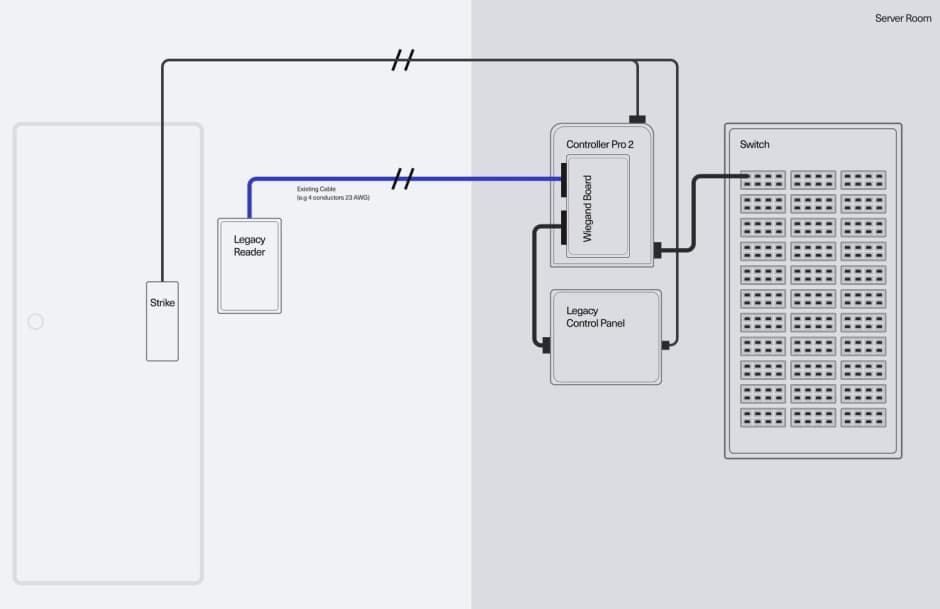
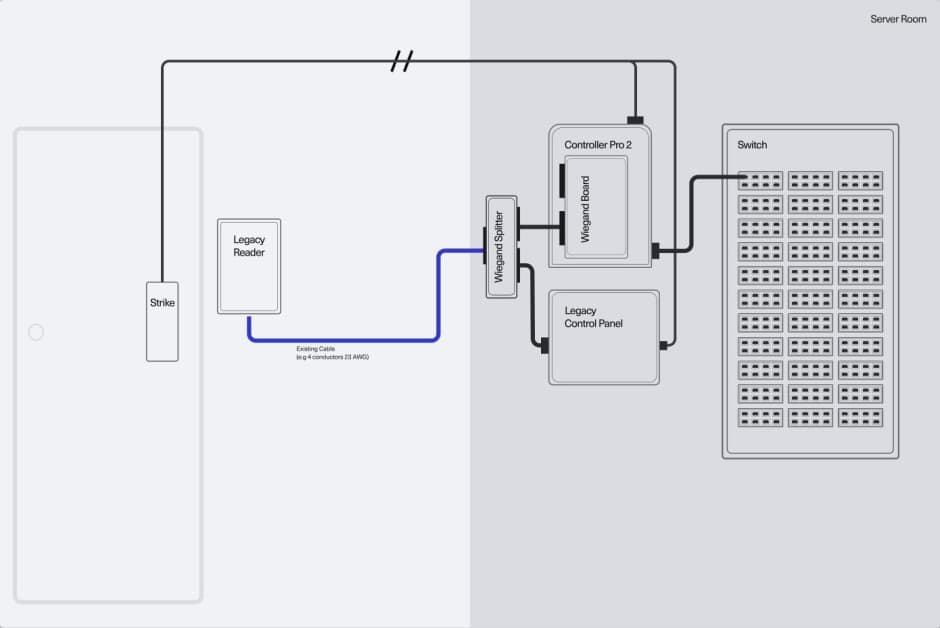
Scenario 3: Keep Your Existing Access Control Wiring
This option is most appealing to businesses interested in embracing the full Kisi solution, but don’t want to undergo the effort, time, and cost associated with rewiring their building to accommodate new hardware.

This scenario is especially of interest to businesses looking to overhaul and modernize their entire access control system.
Execute this migration scenario by replacing your existing controller with Kisi’s Controller Pro 2, replacing your existing readers with Kisi’s Reader Pro 2, and adding HD-PLC and HD-PD adapters (see image below).
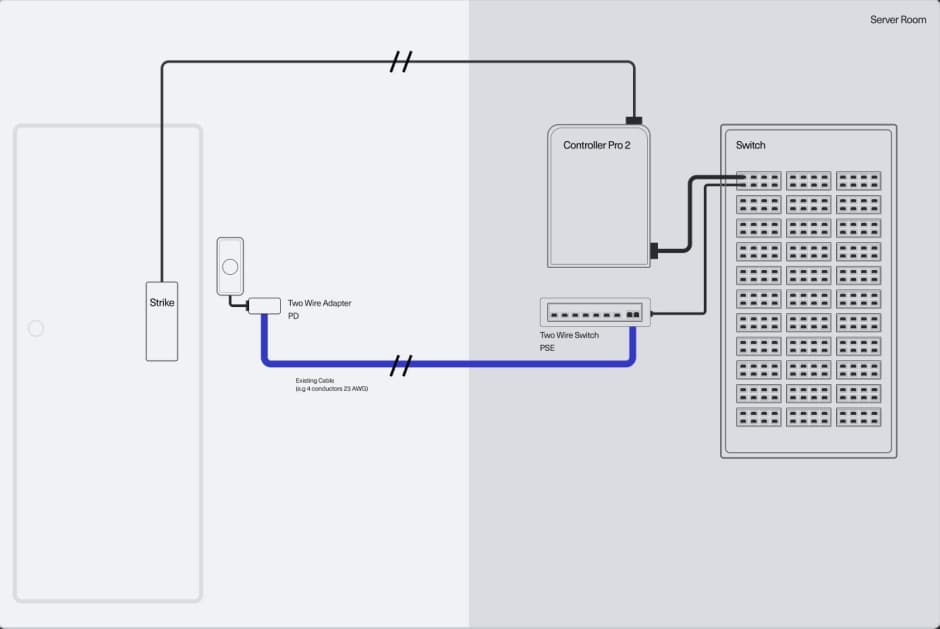
Conclusion
Deciding to migrate or upgrade your existing on-premise solution to the cloud is a major undertaking beneficial in the long run. Evaluate the pros and cons of keeping your existing system versus migrating to a cloud-based solution. There is no one size fits all solution for access control. That is why it is important to set clear migration goals that reflect the organization’s objectives without compromising and choose a flexible provider like Kisi to support you every step of the way.
Save time. Enhance security.
Modernize your access control with remote management and useful integrations.
Continue learning

